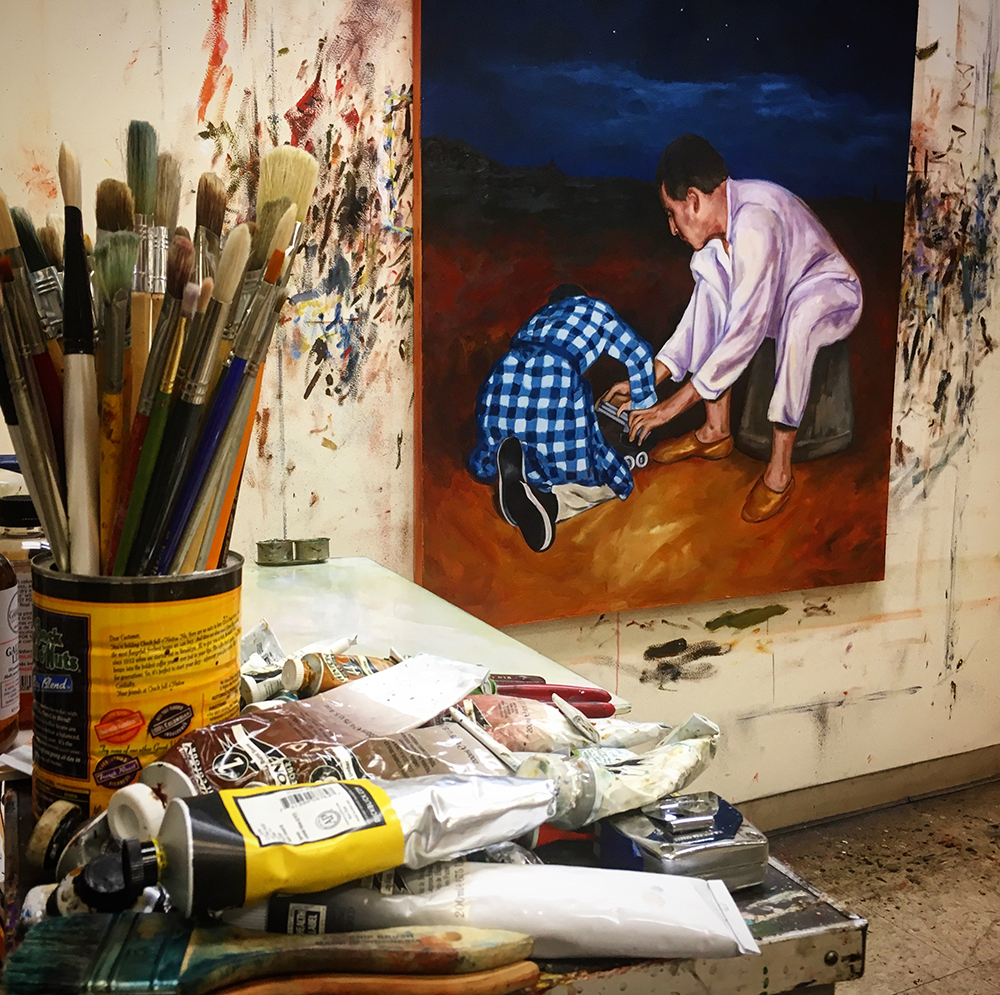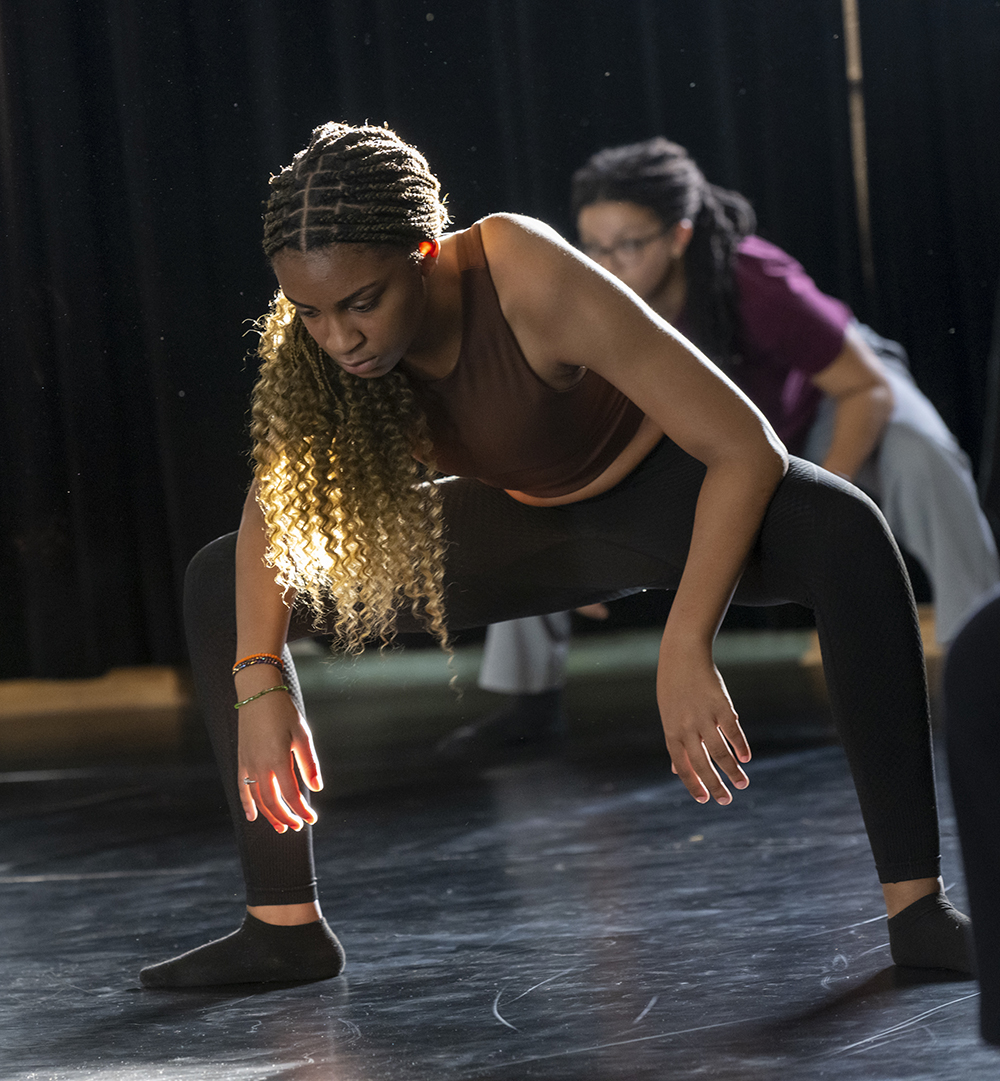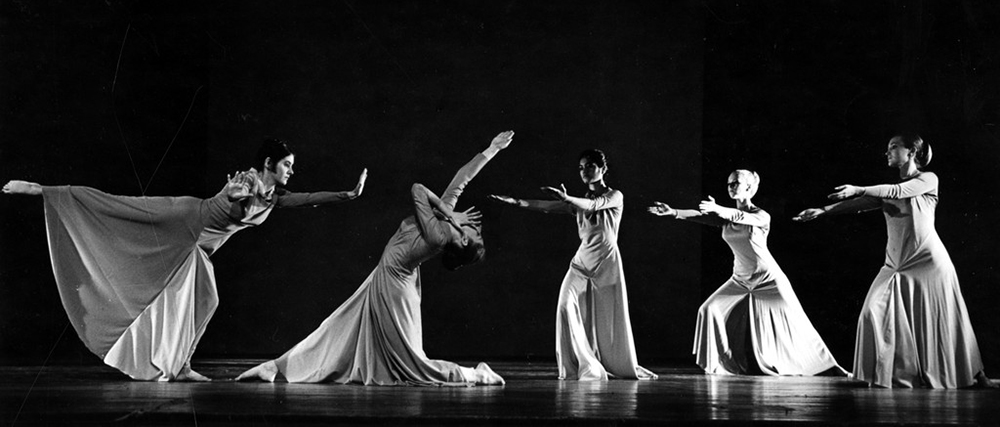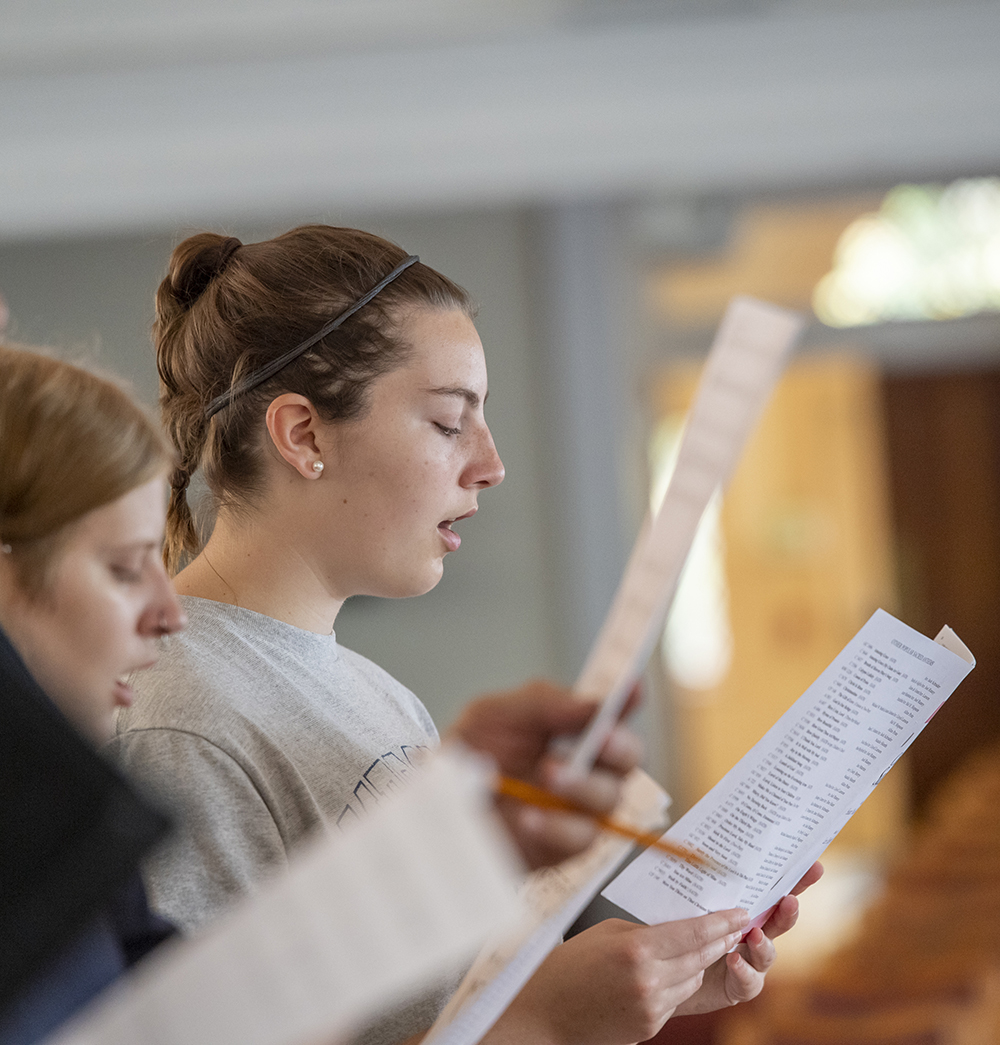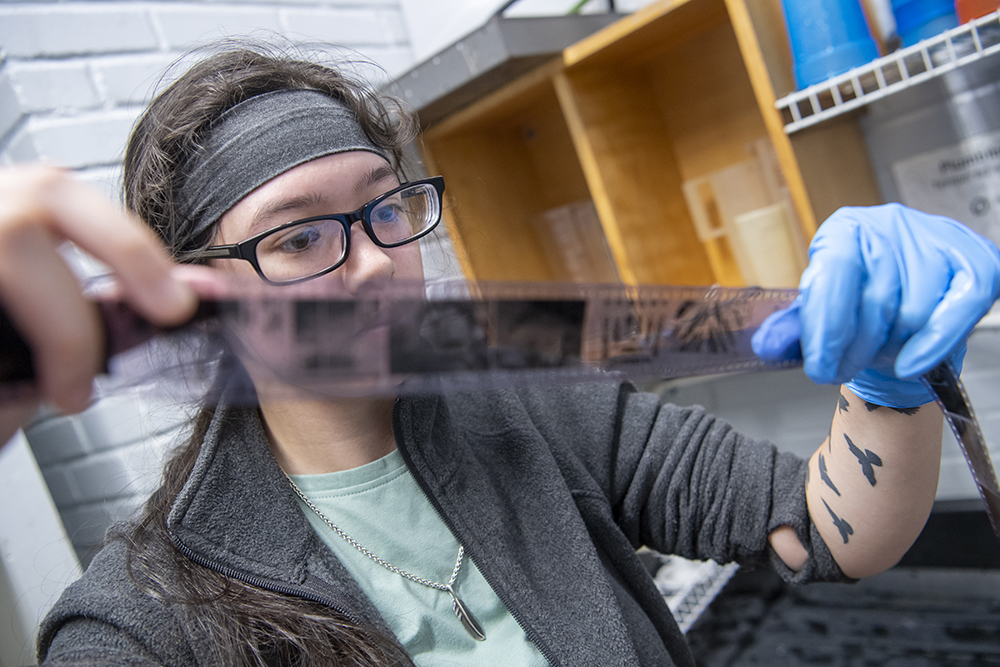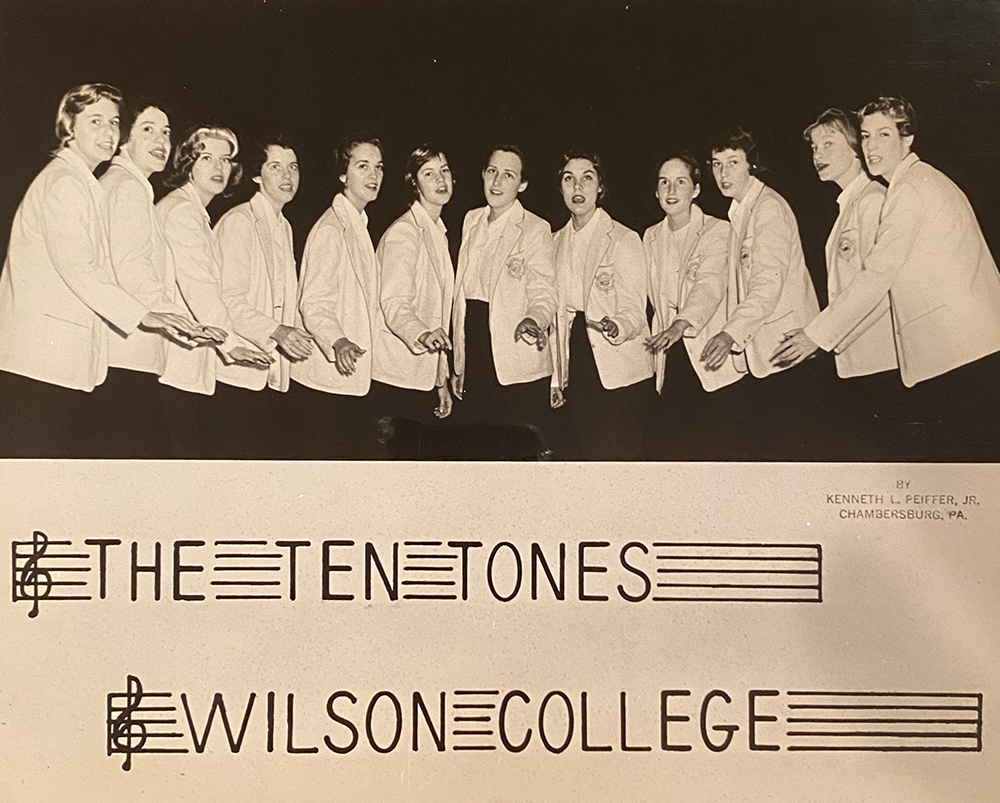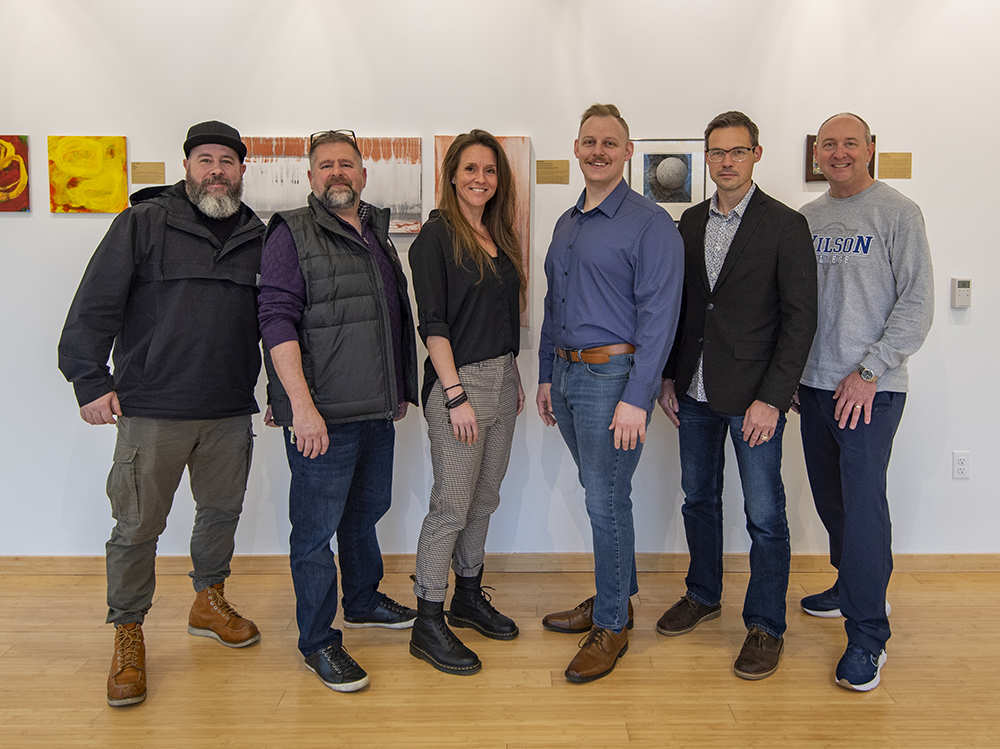With curricular changes, increased collaborations between disciplines, new faculty hires, equipment updates, and renewed energy, the arts at Wilson are transforming.
By Darrach Dolan
Music, dance, painting, singing, writing, and performance have been a critical part of a Wilson education since her founding. In keeping with the College’s strategic plan to deliver relevant and rigorous courses, the arts at Wilson are undergoing a philosophical and pedagogical review. Our outstanding faculty are reimagining the courses they teach, the creative pursuits they direct, and the relationship between the various arts on campus. They aim to deliver a wide choice of creative options to students in the most meaningful, inclusive, and accessible ways.
In practice, disciplines such as dance, singing, and music, which may not have gotten the attention or funding they deserved over recent years, will be given new leases on life. And other disciplines, such as creative writing and the visual arts, will be more aligned with contemporary and industry standards. And all the arts at Wilson will be brought under one philosophical umbrella to encourage collaboration and cross-pollination among student and faculty artists.
The transformation has begun. Already we have opened a new graphic art laboratory, have started recruiting students for a show choir, are redesigning the dance studio, and are making many more behind-the-scenes changes.
The entire arts courses, offerings, and programs will be rebranded this spring as The Arts at Wilson. “This is a natural progression of what we have been working on for five years or so,” Philip Lindsey, Professor of Studio Practice, says, “coupled with exciting ideas and opportunities that come with new faculty who’ve joined the arts programming at Wilson in the last two years.”
And this reimagining of the arts has been made more timely by the soul-searching during the pandemic. Across the planet, people reevaluated their relationships with work and community. Many found or rediscovered the value of the arts and their ability to take you out of yourself and make fundamental human connections across time, space, and cultures.
“The school has begun to move beyond the pandemic and embrace the College’s strategic plan,” said Joshua Legg, the MFA director and a professor of interdisciplinary practice. “We’ve tried to make the most of what that strategic renewal can do for the arts on campus and how we can contribute to the goals of that plan. For instance, we’ve finally been able to use generous donations from alumnae who wanted to help revive a music program at Wilson. Last spring, President Fugate charged arts faculty and our Division Chair, Michael Cornelius, with finding a way to put those funds to use, which ultimately led to hiring Wilson’s first full-time music faculty member since the 1980s.”
“In fact,” Legg continued, “we are hoping that alumnae who were on campus in the ‘80s might find some similarities between the interdisciplinary arts degree that existed then and what we are building now. We even have an interdisciplinary arts concentration in the Master of Fine Arts program, and we are considering what a revived degree of that sort might look like at the undergraduate level.”
Encouraging collaboration and cross-pollination between the arts faculty and programs is an essential aim of bringing the arts under a single umbrella at the College. “The students in our MFA draw from multiple disciplines for their art and are dedicated to collaboration, both with each other and with artists outside of the program,” said Matthew McBride, poet and professor of English. “Interdisciplinary and collaborative artmaking is a large part of our MFA’s ethos, and one of the goals of reimagining the Arts at Wilson is to imbue the College’s undergraduate curriculum with that same energy.”
The faculty have made changes across the arts curricula this year that better align undergraduate and graduate programming and pave the way for more contemporary and relevant experiences for Wilson’s students at both levels. “Those experiences,” Lindsey said, “not only keep our curricula in the individual disciplines closely connected to the cutting edge in our respective fields but also foster a better sense of how artists across those fields are embracing collaborative practices.”
Dance and Performance
While many of these developments come from the faculty’s efforts to keep our programs current, some stem from the sheer need in a post-pandemic world. “It was clear that the struggles of the last several years had taken a toll on dance at Wilson,” said Jen Graham, a choreographer and dance professor, who is rebuilding the dance and movement minor. “On the positive side,” she said, “this created an opportune time, as I stepped into this position, to immediately engage with the other arts faculty in reimagining how we can build on the strong values, traditions, and history of dance and the arts at the school to support and prepare our students in a post-pandemic landscape.”
“It can be tough for a new faculty member to have to engage in significant curricular revisions their first semester on a campus,” Legg said, “but Professor Graham took time to get a deep sense of the culture of Wilson, explored the rich and vibrant history of dance here so that she gained an understanding of the students’ needs, and connected with this community before making decisions about changes to the curriculum.”
“As my colleagues have noted,” Graham said, “this next evolution of dance at Wilson takes cues from the unique non-hierarchical interdisciplinary and collaborative nature of our MFA program. It also happens to be the way that we tend to work together as artist-scholars, as well as tying in with the College’s mission and vision. Perhaps more importantly, this was inspired by our long history of helping our students find and develop their individual creative voices through dance and movement.”
Faculty are also planning changes to the Appenzellar-Buchanan Dance Studio. “We have a beautiful dance studio that has long been used as a performance space as well,” Legg noted. However, the space could use general updates. “It’s time for a new sound system and media equipment. Wilson’s IT team is doing great work helping us acquire those things,” he said. “Attending to those overdue updates has also allowed Professor Graham and me to think about how we can better utilize the space not just for classes but for performances, too. Our plan, over time, is to rework how we use the space for performances and to enhance it as a black box theatre space that can support not only student dance performances but also small professional dance groups. And, now that we have theatre back in the curriculum via the MFA, we’re thinking about how experimental theatre could be presented in the studio/black box setting, too.”
Part of that process will involve exploring the possibility of adding an LED lighting system in the studio space to enhance performances. “We’ll also flip the locations where the audience sits and the artists perform to make better use of the possible entrances and exits,” Legg said. Graham and Legg indicated that it would take time to build the budget for a lighting system but that this is the appropriate time to begin that planning and that they will be working to link that process to the College’s strategic plan over the next three years.
Music and Choir
Dillon Beede, our new director of choral activities and chair of music, had a similar experience to Graham’s during his first semester on faculty. “This is a very unique and exciting opportunity for music at Wilson College,” he remarked, “as it’s so rare to be able to step into a space in academia to envision and build a program from scratch. I’m grateful to be joining a campus community that supports the arts and a new program like music in both word and deed.” As part of the re-envisioning of musical opportunities, Beede will launch the Wilson College Show Choir in Fall 2023. Additionally, Beede made his Wilson debut conducting the College’s long-standing concert choir as part of the Christmas Vespers service. Beede has also moved a set of curricular revisions forward this year that will support the student music experience on campus beginning in Spring 2024.
Visual Art
In addition to new and revised performing ensembles, Wilson has opened a digital design lab this semester. “We are excited to have a dedicated graphic design and digital artmaking lab on the campus,” said Adam DelMarcelle, artist and graphic design professor. “The lab, which features industry-standard design and digital artmaking tools, was realized thanks to the collaborative effort of faculty and our IT department. This state-of-the-art workspace allows students to learn in an environment that mirrors the professional design studios they will experience once graduating from Wilson and entering the field of graphic design, illustration, and visual art.”
The lab will also benefit studio art students looking to add digital artmaking to their skill sets. The studio is equipped with Macintosh computers, large-format scanners, a large-format printer, and a 3D printer. This new dedicated workspace will allow students to expand their skills and gain experience with emerging technologies. Graduate students will also benefit from this industry-standard equipment during the MFA program’s summer intensives. Legg observed, “I’ve interviewed prospective graduate students who ended up not applying for our MFA because we didn’t have a 3D printer or couldn’t provide industry-standard Macs for them to work on here on campus. Our old PC lab just couldn’t handle the kind of film or multimedia work that choreographers are making these days. You need Macs to power that work.”
A Rich Arts Legacy
The arts faculty are quick to acknowledge that they aren’t throwing out what came before. Quite the opposite. They are enthusiastic about contributions from past students and other arts faculty. Lindsey noted, “Paula Kellinger, Professor Emerita of Dance, built a foundation for our current programming, focusing on what she referred to as ‘a deep commitment to the intellectual, emotional, and cultural growth of students and Wilson College … where learning is an intimate collaboration and exchange of ideas.’”
“And Bob Dickson, Professor Emeritus of Fine Arts,” Lindsey continued, “saw a Wilson education as an obligation to ‘look at art objects from around the world to expand our horizons and to begin to understand the place of art in culture and the way that cultures influence one another.’”
For Kellinger and Dickson, doing art was not the same as making art, and participation was not an option. Wilson’s current arts faculty share that belief and that art is non-hierarchal. They see it as interdisciplinary and engaging, and they are developing a community tied to Wilson’s mission that, among other goals, emphasizes creating visionary leaders and agents of justice. And for these faculty members, that is done, in part, through artistic practice and products or productions.
Graham elaborated, “While the dance coursework has found new form, I feel that it is deeply connected to and builds from the work and vision of Paula Kellinger in her development of the dance program and regains focus on Wilson’s beloved Orchesis as a student-led extension of that program, revitalizing the scope and breadth of opportunities for our students and magnifying the prominence and power of their voices.”
The Arts at Wilson
The faculty is committed to engaging and encouraging pedagogical, artmaking, performance, and presentational practices that intentionally confront and interrogate systems of power and their effect on the individual and society. They guide students in developing tools and processes for artistic inquiry and creation, paralleling those of scientific inquiry and discovery, and view those as one and the same.
Graham observed, “We aim to awaken students to the experiences and perspectives of not just themselves as an individual, but as an individual who is a part of an interconnected and interdependent whole. We support students in cultivating tools for critical observation, offering discerning feedback, and engaging in productive, growth-oriented exchange and discussion.”
All of this is leading to a rebranding of Wilson’s arts programs in early 2023. “For a long while,” Lindsey said, “our area has been Fine Arts and Dance. But that doesn’t fully describe what we do any longer. Enhancing graphic design, incorporating creative writing into the MFA, reintroducing both music and theatre into the curricula, and adding new faculty made us realize we needed to identify our area more broadly, but also more succinctly.”
Therefore, starting in the spring, the array of creative options will simply become The Arts at Wilson, and a new graphic for this grouping will be unveiled in April during Arts Fest.
“The really exciting part of all of the revisions to the curricula and to the arts spaces, of course,” Lindsey pointed out, “is what these things will mean to our students. They will be working with a highly engaging and contemporary curriculum and with tools and in spaces that are in better keeping with our fields. That should enhance our ability to recruit and retain undergraduate and graduate students alike.”
Meet the Wilson Arts Faculty
Left to right:
Adam DelMarcelle – Assistant Professor of Graphic Design
Joshua Legg – Associate Dean for Academic Affairs and MFA Program Director
Jen Graham – Visiting Assistant Professor of Dance and Assistant MFA Program Director
Dillon Beede – Director of Choral Activities and Chair of Music
Matthew McBride – Assistant Professor of Interdisciplinary Practice
Philip Lindsey – Professor of Studio Practice
Michael Cornelius — Professor of English, Master of Humanities Program Director, and Master of Organizational Leadership Program Director (not pictured)
Spring 2023 Arts Calendar
January 23, Mac Design Lab opens
February 1 to March 3, Bogigian Gallery – Hagerstown Community College Student Exhibition
March 4, Wilson College Creative Writing Colloquium (a free writing conference featuring readings and workshops by nationally and internationally recognized authors)
March 29 to April 21, Bogigian Gallery – Annual Juried Student Art Exhibition
Continuing Through March 31st: Cooley Gallery – Improvised: The Art of Practiced Freedom, featuring works by arts faculty from Hagerstown Community College and Wilson College
April 13 to 15, Wilson Arts Fest (specific dates and times are TBA)
Open Studio & Art Give-Away by Philip Lindsey
Cooley Gallery Exhibit by Joshua Legg
MFA alumna Katie Pustizzi in residence with student workshop & performance/screening of her most recent dance film Liquid Spine including a talkback after the screening
A Shadow that Broke the Light by Charlie & Adam DelMarcelle, a 24-hour immersive theatre experience
Dillon Beede, Voice Recital with Guest Dance Artist Jen Graham
April 28 to May 15, Bogigian Gallery – Senior Capstone Exhibition
May 7, Wilson Choir Concert
Current Artistic Practices
Available to undergraduate students:
• degrees: creative writing and visual art (including graphic design and various 2D and 3D studio art practices)
• minor: dance/movement
• credit courses: music
Available to students in the MFA Program:
• choreography
• creative writing
• directing for theatre
• directing and choreography for musical theatre
• interdisciplinary arts
• visual art

